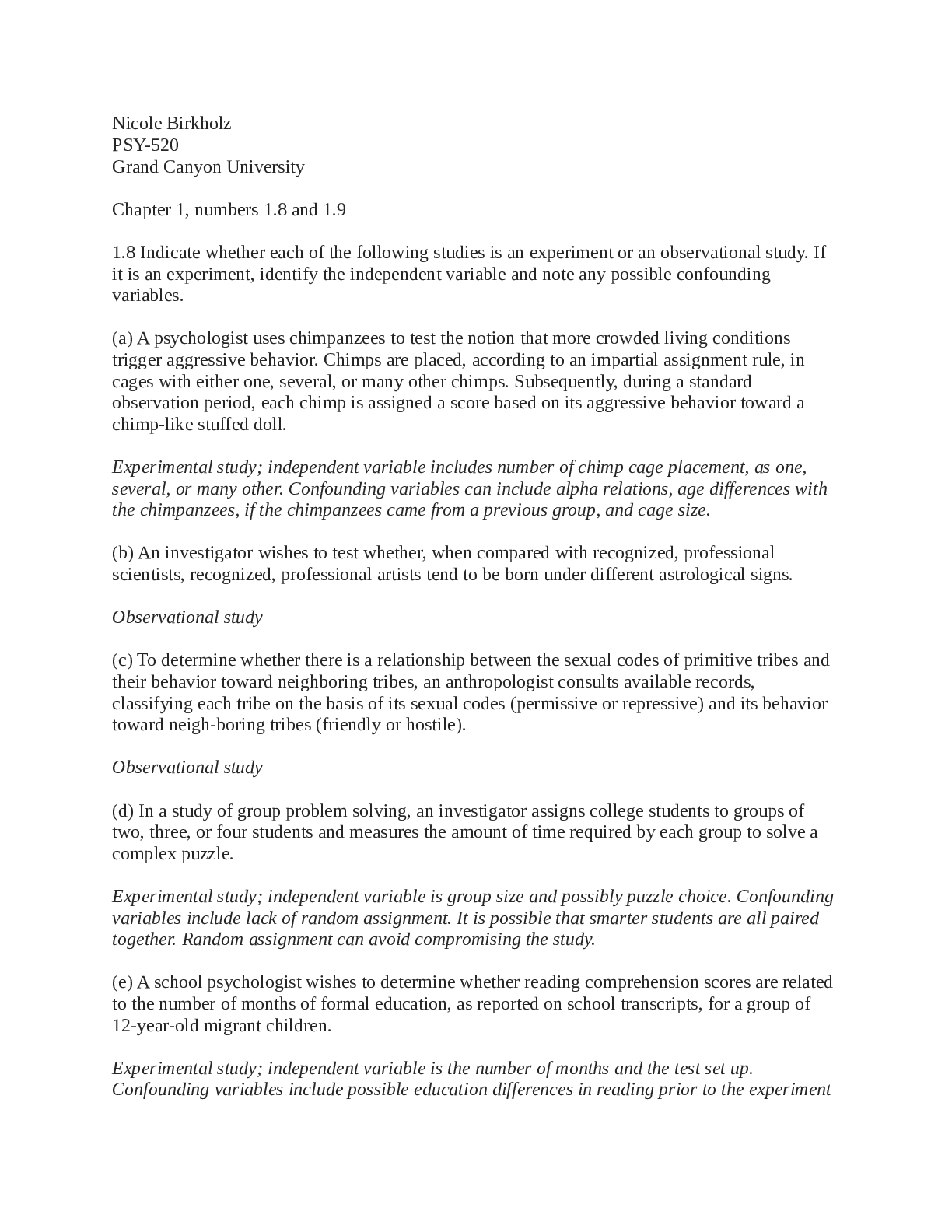Nicole Birkholz
PSY-520
Grand Canyon University
Chapter 1, numbers 1.8 and 1.9
1.8 Indicate whether each of the following studies is an experiment or an observational study. If
it is an experiment, identify the independent variable and note any possible confounding
variables.
(a) A psychologist uses chimpanzees to test the notion that more crowded living conditions
trigger aggressive behavior. Chimps are placed, according to an impartial assignment rule, in
cages with either one, several, or many other chimps. Subsequently, during a standard
observation period, each chimp is assigned a score based on its aggressive behavior toward a
chimp-like stuffed doll.
Experimental study; independent variable includes number of chimp cage placement, as one,
several, or many other. Confounding variables can include alpha relations, age differences with
the chimpanzees, if the chimpanzees came from a previous group, and cage size.
(b) An investigator wishes to test whether, when compared with recognized, professional
scientists, recognized, professional artists tend to be born under different astrological signs.
Observational study
(c) To determine whether there is a relationship between the sexual codes of primitive tribes and
their behavior toward neighboring tribes, an anthropologist consults available records,
classifying each tribe on the basis of its sexual codes (permissive or repressive) and its behavior
toward neigh-boring tribes (friendly or hostile).
Observational study
(d) In a study of group problem solving, an investigator assigns college students to groups of
two, three, or four students and measures the amount of time required by each group to solve a
complex puzzle.
Experimental study; independent variable is group size and possibly puzzle choice. Confounding
variables include lack of random assignment. It is possible that smarter students are all paired
together. Random assignment can avoid compromising the study.
(e) A school psychologist wishes to determine whether reading comprehension scores are related
to the number of months of formal education, as reported on school transcripts, for a group of
12-year-old migrant children.
Experimental study; independent variable is the number of months and the test set up.
Confounding variables include possible education differences in reading prior to the experiment
Read More


